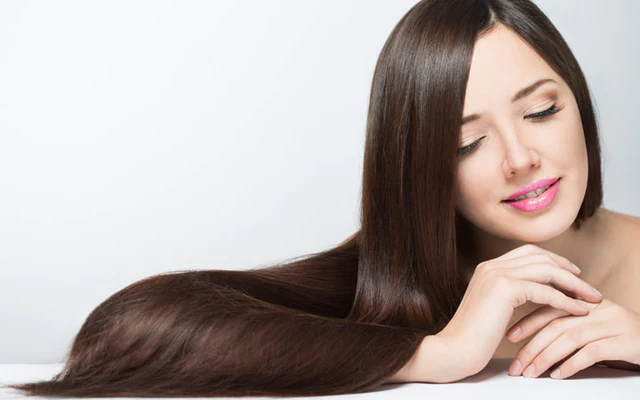Essential Hair Care Tips: Expert Advice to Get You Started
Hair care is an essential part of any grooming routine, and it can make a big difference in the way you look and feel. But with so many products and methods out there, it can be difficult to know where to start. Luckily, we have 17 expert-approved hair care tips to get you started on the right track. Read on for advice on the best products to use, how to maintain healthy hair, and how to achieve the styles you desire.
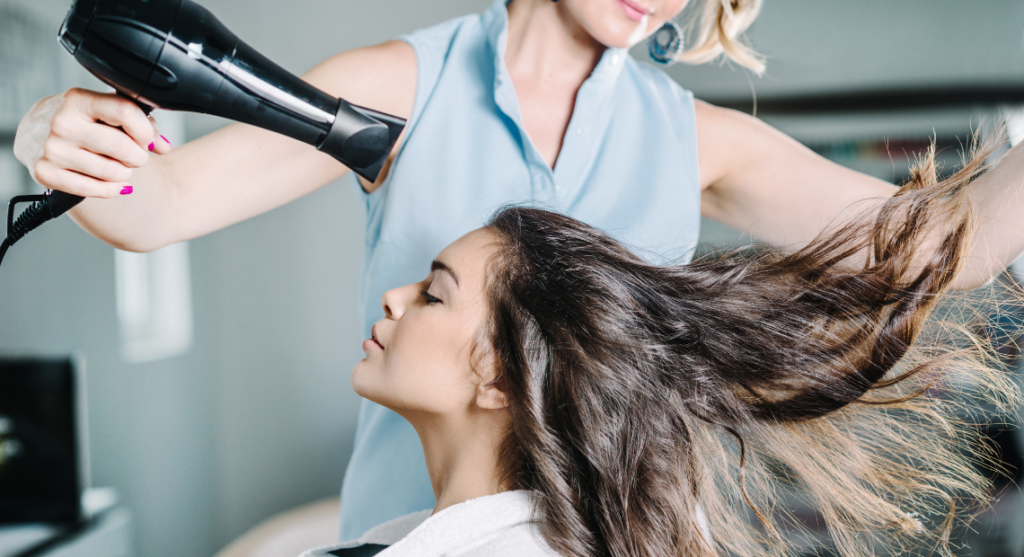
Talk to your stylist.
Your stylist is an important resource for starting a hair care routine. Your stylist can help you determine your hair type and texture, as well as the best products for your hair. They can also give you advice on styling, coloring, and cutting your hair. Additionally, they can recommend treatments that are specifically designed for your individual hair needs. This can help you get the most out of your hair care routine. So, don’t forget to consult with your stylist when starting your hair care routine!
Shampoo less frequently.
When it comes to how to start a hair care routine, one of the most important tips is to shampoo less frequently. Although it can be tempting to wash your hair every day, this can actually strip away its natural oils and dry it out. Instead, try shampooing your hair only a couple of times a week. If you need to freshen up in between washes, consider using a dry shampoo. This will help absorb excess oil and give you a more refreshed look without compromising the health of your hair.
Be gentle with your hair.
Hair care starts with taking the right steps to ensure that you’re gentle with your hair. To do this, avoid over-washing and scrubbing your scalp too vigorously. Over-washing can strip your hair of its natural oils, leaving it dry and damaged. Instead, shampoo only 2-3 times a week. Additionally, try to avoid excessive brushing and combing, as this can also damage your hair. Make sure you use a wide-toothed comb or brush with soft bristles, and always start from the bottom of your hair and work your way up. This will help keep the cuticles of your hair smooth and reduce breakage. Lastly, when styling your hair, avoid using extreme temperatures and be gentle. Take extra precautions like using a heat protectant spray before using hot styling tools on your hair.
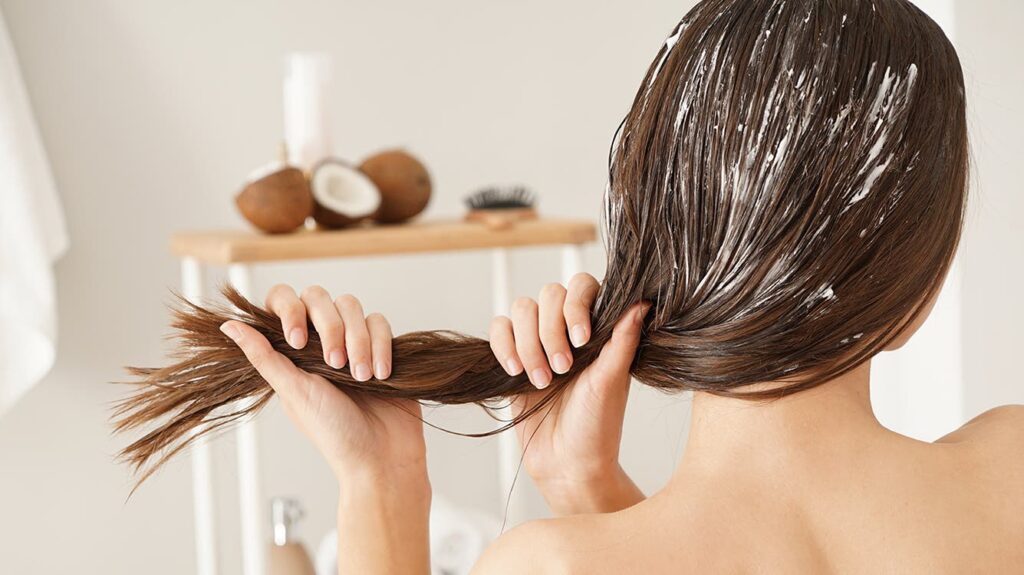
Don’t forget about conditioner.
Conditioner is a must-have in any hair care routine. When it comes to conditioner, it’s important to choose the right one for your specific hair type and to use it properly. When it comes to how to start a hair care routine, proper conditioning is key.
For most people, conditioner should be used after shampooing. For best results, you should leave the conditioner in your hair for two to three minutes before rinsing. Make sure to rinse out all the product and avoid using too much, as this can weigh down your hair and leave it feeling greasy.
When it comes to what type of conditioner to use, look for something specifically designed for your hair type. If you have dry, damaged hair, then opt for a deep conditioning treatment. For finer hair, look for something lightweight and hydrating. For curly hair, look for a product that offers both nourishment and definition.
No matter what type of hair you have, make sure you are using conditioner regularly. It helps keep your hair looking healthy and shiny and prevents breakage. With regular use of conditioner, you’ll be well on your way to having a successful hair care routine.
Use leave-in conditioner.
When it comes to how to start a hair care routine, one of the most important steps is using leave-in conditioner. Leave-in conditioners help keep your hair moisturized and looking its best. They can also help protect your hair from damage caused by the sun, heat styling, and environmental stressors.
When applying leave-in conditioner, always start at the ends of your hair and work your way up to the roots. This will ensure your strands are evenly coated and hydrated. You can also use a wide-toothed comb or your fingers to spread the product throughout your hair. Depending on the type of leave-in conditioner you’re using, you may want to wait a few minutes before rinsing it out or leaving it in overnight.
Leave-in conditioners come in a variety of formulas, so be sure to read the instructions carefully before applying. If you have colored hair, look for products specifically designed for that type of hair to help maintain your color and prevent fading. Also, make sure to only use leave-in conditioners when your hair is damp—not wet—for the best results.
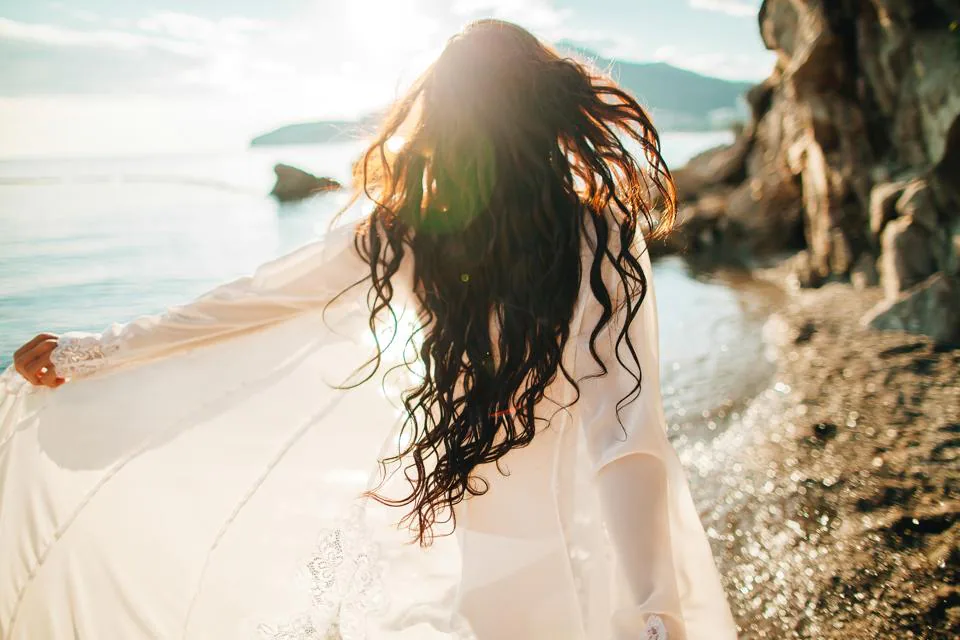
Protect your hair from the sun.
Exposure to the sun can be damaging for your hair. UV rays can cause your hair to become dry, brittle, and weak, which can lead to breakage and split ends. To protect your hair from the sun’s harsh rays, it is important to take preventive measures.
One way to protect your hair from the sun is by wearing a hat or other protective headwear when you are outdoors. Not only will this help keep the sun off of your scalp, but it will also provide additional insulation and prevent your hair from getting too hot in the sun. If you don’t have a hat, you can also use a scarf or bandana to cover your hair.
You should also use a UV-protective product on your hair before going outside. Look for products that contain SPF or UV protection and apply them according to the instructions. This will provide an extra layer of defense against the sun’s rays and help to keep your hair looking healthy.
If you plan to be swimming in a pool or spending extended time in direct sunlight, make sure to wear a swim cap. This will protect your hair from both the sun and chlorine, which can be very damaging for hair. Additionally, rinse your hair with fresh water after swimming to remove any chlorine or salt water from your strands.
Following these tips can help ensure that your hair stays healthy and protected when spending time in the sun. Taking the necessary steps to protect your hair from the sun’s damaging rays will help keep it looking beautiful and vibrant for years to come.
Get regular trims.
Getting regular trims is an important step in any hair care routine. Trims help to keep your hair looking healthy and remove any split ends or damaged hair. Getting a trim every six to eight weeks will help maintain the shape of your style and keep your hair looking great. For longer hairstyles, getting trims every 12 weeks is usually sufficient.
Your stylist can help you choose the best trim for your hair type and style. They may suggest adding layers or cutting the ends to make the style look fuller or removing dead ends. Whatever trim your stylist recommends, it is important to get them done regularly to keep your hair looking its best.
Consider switching your pillowcase.
The pillowcase you sleep on can have a huge impact on the health of your hair. If you’re still using a traditional cotton pillowcase, you may want to switch to something else. Cotton pillowcases can snag and tangle hair, leading to breakage.
Silk and satin pillowcases are much gentler on the hair and scalp. They help reduce friction and allow hair to glide freely while you sleep, minimizing tangles and knots. They also keep moisture and oil in the hair, which helps prevent breakage and split ends. If you don’t want to invest in a special pillowcase, try wrapping your pillow in a silk or satin scarf before you go to bed.

Don’t use heat on your hair every day.
Using heat on your hair every day can cause severe damage and can also lead to hair breakage. Heat styling tools such as straighteners, curling irons and blow-dryers should only be used occasionally. If you need to use them more frequently, be sure to use a thermal protectant spray and reduce the temperature on the tool. When using heat, always use the lowest setting possible, and never leave a hot tool on one spot for too long. It’s best to let your hair air dry as much as possible, and if you must use heat, give your hair a break between uses. Try to limit heat-styling sessions to no more than twice a week, and use a heat protectant spray each time you do.
Let your hair air dry whenever possible.
If you’re looking for a way to reduce damage to your hair, one of the best tips is to let your hair air dry. Air drying can help you avoid heat damage that can be caused by blow-drying or using other heated styling tools. Instead of blasting your hair with hot air, simply let it air dry naturally.
To help ensure that your hair air dries in a healthy way, you should use products specifically designed for air drying. Look for lightweight styling creams and sprays that don’t contain harsh chemicals or heavy oils. These products can help hydrate your hair and keep it smooth and frizz-free while it dries. If you have particularly thick or curly hair, you may want to try diffusing your hair as it air dries to help encourage waves and curls.
Additionally, you should also avoid manipulating your hair too much while it air dries. Try not to brush or comb it, as this can cause breakage and further damage. And if possible, avoid sleeping with wet hair — instead, tie it up in a loose bun or braid before you hit the pillow.
By following these tips and letting your hair air dry whenever possible, you can help maintain its health and reduce the amount of damage done by heated styling tools.
Invest in high-quality hair tools.
When it comes to keeping your hair looking its best, investing in high-quality hair tools is a must. Quality tools like brushes, combs, and curling wands can make a huge difference in the overall health of your hair. Investing in quality tools ensures that your hair is being treated with care and gentleness while also helping you achieve the look you want.
For styling, look for brushes and combs that are made of natural materials like boar bristles or wood, as these are less likely to cause breakage or frizz. For curling and straightening, look for heat-resistant tools that won’t cause too much damage when used at high temperatures. Additionally, look for tools that feature adjustable settings so you can adjust the temperature for your specific hair type. Taking the time to invest in quality tools will go a long way in protecting your hair from damage and helping you maintain healthy hair.
Avoid using tight hairstyles.
Tight hairstyles can cause a lot of damage to your hair, especially if they are done frequently. Pulling the hair too tightly can cause breakage and loss of hair. It can also cause scalp damage and lead to thinning or bald spots. You may experience pain or discomfort if you pull your hair too tight.
When styling your hair, opt for styles that are gentle and avoid putting too much strain on your scalp. Loose ponytails, buns, and braids are all great options that won’t pull too tight on your hair or scalp. If you want to use tight hairstyles, limit them to special occasions and never wear them for extended periods of time.
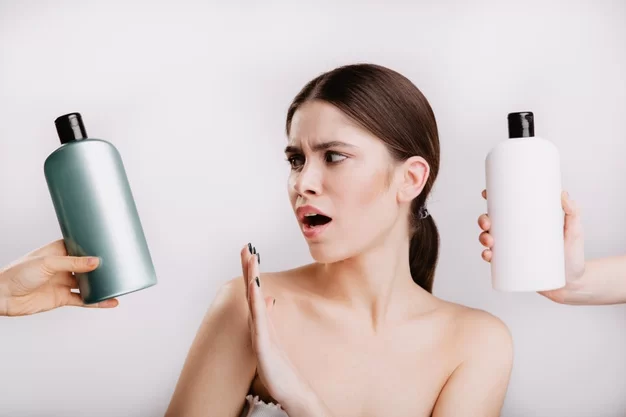
Don’t use harsh chemicals on your hair.
Using harsh chemicals on your hair can cause permanent damage, such as breakage and split ends. To keep your hair healthy and strong, avoid using products with harsh chemicals. Common harsh chemicals that you may find in hair products are sulfates, parabens, phthalates, and formaldehyde. Not only are these ingredients bad for your hair, but they can also be absorbed by the body, causing health risks.
When shopping for hair care products, look for those that are free of harsh chemicals and are labeled “natural,” “organic,” or “all-natural.” If you don’t know what type of product to buy, ask your stylist or a trusted friend who is knowledgeable about hair care. Additionally, make sure to read the labels of any products you are considering buying to ensure that it does not contain any potentially harmful chemicals.
If you find that your hair needs extra conditioning after using a shampoo without sulfates, try adding a deep conditioner or mask to your routine. This will help nourish and strengthen your hair, without exposing it to potentially damaging ingredients. In addition to using natural and organic products, there are other ways to protect your hair from harsh chemicals. Avoid using heated styling tools on a daily basis, as this can also cause damage. Additionally, use a heat protectant spray before blow drying or flat ironing your hair.
Massage your scalp.
Massaging your scalp can help stimulate hair growth, improve circulation, and reduce stress. It can also help to loosen dirt and oil from the scalp so that it can be washed away more easily. When massaging your scalp, use your fingertips to apply gentle pressure in circular motions. Start at the forehead and work your way around the head. Massage for two to five minutes, then rinse your hair with warm water. You can use a natural oil like coconut or olive oil to help lubricate the scalp during massage and add moisture to your hair. Regular scalp massage will help keep your hair looking healthy and strong!
Eat a healthy diet.
Eating a healthy diet is essential for keeping your hair healthy. Start by incorporating foods rich in vitamins and minerals like lean proteins, fruits and vegetables, whole grains, and healthy fats into your meals. Protein helps your hair to grow strong and look glossy, while vitamins and minerals provide nourishment and help to keep your hair healthy and shiny. Be sure to include plenty of omega-3 fatty acids in your diet, which have been linked to improving the health of your scalp and hair follicles. Additionally, make sure to get enough iron from plant-based sources such as spinach and quinoa, as well as from lean meats like chicken and fish. Iron-rich foods can help to reduce the risk of anemia, which is a condition that can cause hair thinning.
Drink plenty of water.
Water is essential for keeping your hair healthy and hydrated. When you’re dehydrated, your scalp can become dry, itchy, and flaky, which can lead to dandruff and other hair issues. To ensure that your hair is getting the moisture it needs, make sure to drink plenty of water each day. Aim for eight glasses or about two liters of water a day to keep your hair looking its best. You can also look for products that contain hydrating ingredients like aloe vera, coconut oil, and honey to give your hair an extra boost of hydration.
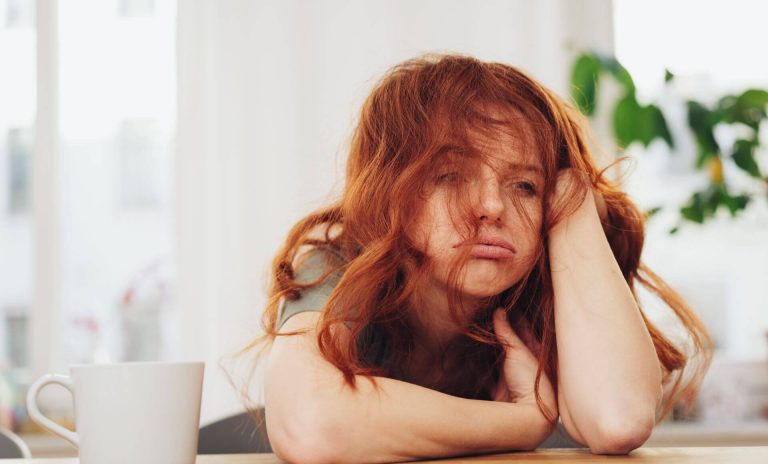
Practice stress-relieving techniques.
Stress can take a toll on your physical and mental health, and it can also affect the health of your hair. To keep your hair looking and feeling its best, it’s important to practice stress-relieving techniques. Here are some easy ways to reduce your stress levels and improve your hair care routine.
- Take time for yourself: Find ways to de-stress each day by taking time for yourself. Whether it’s reading, listening to music, meditating, or going for a walk, carve out some time to relax and unwind.
- Exercise regularly: Exercise is a great way to reduce stress and improve overall wellbeing. Try to work in at least 30 minutes of exercise per day for maximum benefits.
- Practice yoga or stretching: Yoga and stretching are great ways to reduce stress and tension in the body. Taking a few minutes each day to practice deep breathing and gentle stretching can help you feel more relaxed and energized.
- Get enough sleep: Make sure you’re getting enough sleep each night, as this can help reduce stress and make you more productive during the day.
By incorporating these stress-relieving techniques into your daily routine, you’ll be better equipped to handle stress and look after your hair. Taking the time to relax and unwind will help you stay healthy and maintain beautiful, healthy hair.

